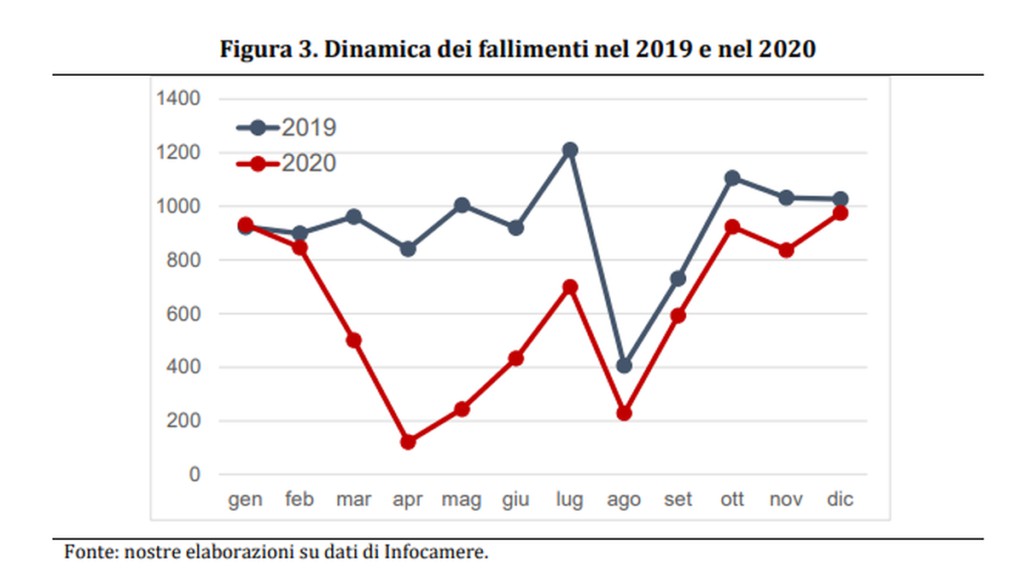Despite Covid, fewer companies went bankrupt in 2020 than in 2019. Or "thanks" to Covid, it would be better to say, given that a recent study by the Bank of Italy confirms that many companies have so far been saved thanks to the support measures due right to the emergency, but that their bankruptcy is probably only postponed, to 2021 or even 2022. According to Bank of Italy estimates, in fact, the strong contraction of GDP recorded in 2020 will lead to an increase of around 2.800 bankruptcies by 2022, compared to the 11.000 registered in 2019. To these 2.800 could be added another 3.700 "frozen" bankruptcies in 2020, which did not materialize due to the temporary effects of the moratorium and support measures: the total number of bankruptcies more than in 2019, chargeable even if "delayed" at Covid, it makes 6.500.
That's why it should come as no surprise that compared to the 11.000 businesses that closed their doors in 2019, in the year which has just ended they were around a third lessdespite all that has happened. The lower number of bankruptcies, according to the analysis of the Bank of Italy, depends on two factors. “First of all – explains a document -, the moratorium on bankruptcies (in force from the beginning of March to the end of June) and the general slowdown in activity in the courts as a result of the measures to contain the pandemic contributed to this. Secondly, some of the businesses already in trouble before the pandemic, and which presumably would have gone bankrupt during the year, could have survived thanks to the economic support measures. However, if the difficulties of these companies are structural in nature, it is possible that they are only bankruptcies postponed over time".

These estimates, Bank of Italy is keen to point out, must in any case be interpreted with great caution, due to the difficulty of extrapolating historical regularities to an extraordinary economic phase such as that of 2020. On the one hand, the elasticity of bankruptcies to the economic cycle could be underestimated due to the presence of non-linearities due to the exceptional fall in GDP. On the other hand, the elasticity could be overestimated because it does not take into account government interventions aimed at tackling the difficulties of businesses or the possibility of mobilizing higher private resources than is normally the case. “Finally – adds the document -, the estimates do not take into account adjustment mechanisms and potential externalities that the economic shock in one area could produce on other areas connected to it through productive relations”.





